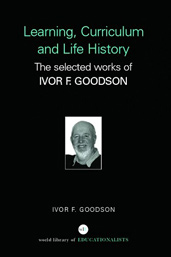Learning, Curriculum and Life Politics: the selected works of Ivor F. Goodson
Long Waves of Educational Reform
Long Waves of Historical Change
The annaliste historians saw time as occurring in waves as the oceanic allegory they use indicates. Febvre (1925) was clear about the vital importance of time in social research. He says history “does not think merely in human terms. Its natural setting is duration” (p. 32).
But as we saw, duration can be divided into different segments: short-term change – what the annalistes call eventements – focus on individual events that happen in a regular way and are of short duration. Medium-term change, they call conjonctures. These happenings have a continuous and hard to reverse rhythm, and represent changes of substantial duration. Long-term stabilities and continuities, they call the longue duree periods, like the reformation or first Industrial Revolution.
In searching for the long waves of educational change in our Spencer case study schools, we are focusing at the level of conjonctures. Here our study derives a good deal, not only from annaliste history but also from major work in economic history, particularly the work of Nikolai Kondratiev, who had founded the Institute of Conjuncture in Moscow in 1920. In 1922, Kondratiev published a book which defined long waves or ‘cycles’ of economic growth, what he called ‘major cycles of the conjuncture’ (1923, p. 524).
Kondratiev had worked out that, over and above the short-term waves of economic cycles of boom and bust, of upswing and downswing, were longer waves.
In general, Kondratiev was pointing to long wave conjunctures of 30 to 40 years’ duration. These long waves were superimposed on the short-term economic cycles that we are more familiar with in the everyday parlance as periods of ‘growth’ and ‘recession’. Kondratiev’s explanatory framework for these long-wave cycles (resembling the medium-term conjoncture of the annalistes) focused upon the life cycle of technology systems. Freeman and Louçã characterize this technology life cycle in the following way:
Thus, in a simplified and schematic way, the following phases in the life cycle of a technology system may be distinguished:
the laboratory-invention phase, with early prototypes, patents, small-scale demonstrations and early applications;
decisive demonstrations of technical and commercial feasibility, with widespread potential applications;
explosive take-off and growth during a turbulent phase of structural crisis in the economy and a political crisis of coordination as a new regime of regulation is established;
continued high growth, with the system now accepted as commonsense and as the dominant technological regime in the leading countries of the world economy; application in a still wider range of industries and services;
slow-down and erosion of profitability as the system matures and is challenged by newer technologies, leading to a new crisis of structural adjustment;
maturity, with some ‘renaissance’ effects possible from fruitful co-existence with newer technologies, but also the possibility of slow disappearance
(Freeman & Louçã 2001, p. 146).
